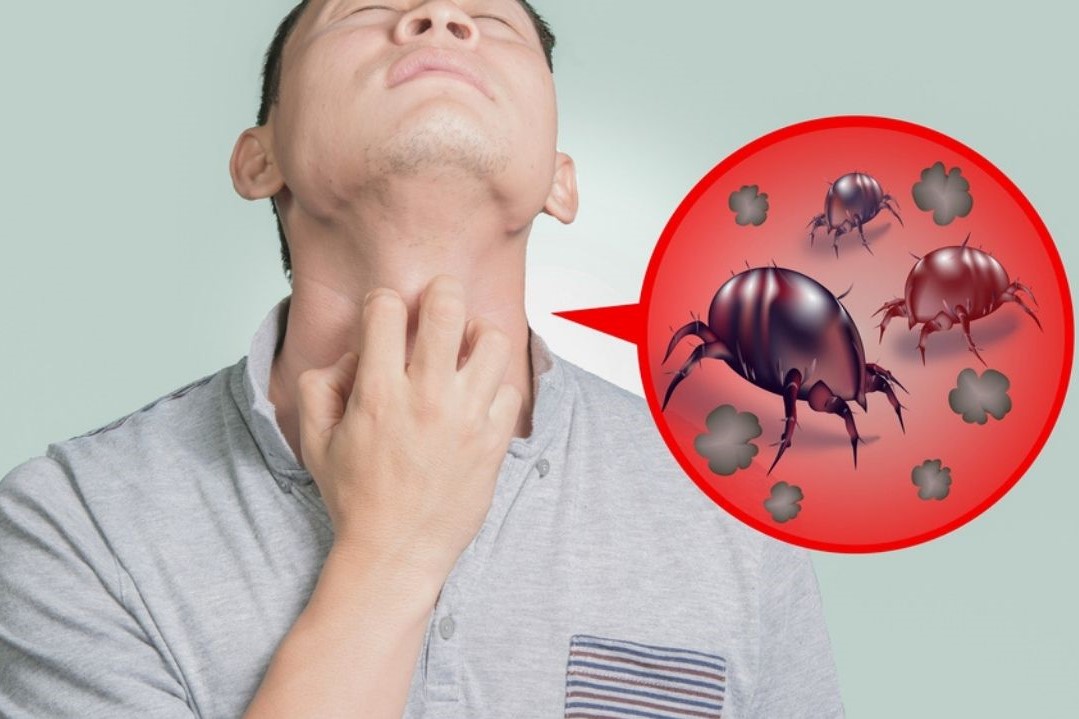
Acariasis, the skin disease caused by mites
Acariasis is a skin disease caused by mites. The bites of these arachnids can cause intense and very unpleasant itching, but above all lead to certain diseases
Acariasis: what is it?
The term acariasis refers to all diseases that result from mite bites.
In some cases, infestations of these arachnids can cause diseases such as scabies.
What are mites?
Mites, contrary to popular belief, are not insects, but arachnids that belong to the group of ectoparasites.
In nature, there are many species of mites that attack humans: some live on the surface of the body permanently, while others attack both humans and animals.
Acariasis: symptoms
The symptoms of acariasis vary depending on the mite species that caused the bite.
In the case of Sarcoptes scabiei, for example, lesions appear in which the arachnids lay their eggs.
Infestation by this microorganism is known as scabies and causes intense itching, especially at night, the appearance of blisters and skin lesions that can lead to bacterial infections.
Species of the genus Demodex spp, on the other hand, cause itchy, acne-like lesions.
We then find mites of the D. brevis and D. folliculorum family that live permanently in hair follicles, but in some cases can proliferate uncontrollably, giving rise to demodicosis.
Acariasis: treatment and prevention
The treatment of acariasis is related to the elimination of mites from the surface of the body.
Usually the doctor can prescribe a treatment with topical drugs depending on the type of problem encountered.
In any case, the best treatment against acariasis remains prevention, avoiding contact and infestation by these ectoparasites.
First, it is important to avoid contact with patients already infested with mites, as the arachnid spreads from person to person.
One must also avoid the use of clothing, towels and linens of people infested with mites.
To eliminate contagion, everything must be washed at high temperatures (at least 60 degrees) in the washing machine.
Another practice to protect oneself from mite infestation is to use pesticide on one’s pets, both for those that live outside and those that are often indoors.
Read Also
Emergency Live Even More…Live: Download The New Free App Of Your Newspaper For IOS And Android
Toxocariasis: The Zoonosis Transmitted By The Nematodes Toxocara Canis Or Toxocara Cati
Toxoplasmosis: What Are The Symptoms And How Transmission Occurs
Toxoplasmosis, The Protozoan Enemy Of Pregnancies
Managing Chickenpox In Children: What To Know And How To Act
Monkeypox Virus: Origin, Symptoms, Treatment And Prevention Of Monkey Pox
Leptospirosis: Transmission, Diagnosis And Treatment Of This Zoonosis
Parasitoses And Zoonoses: Echinococcosis And Cystic Hydatidosis
Allergies In Children, Symptoms And Allergy Tests
Allergies To Stinging Insects: Anaphylactic Reactions To Wasps, Polistines, Hornets, Bees
Food Allergies: Causes And Symptoms
When Can We Talk About Occupational Allergies?
Adverse Drug Reactions: What They Are And How To Manage Adverse Effects
Symptoms And Remedies Of Allergic Rhinitis
Allergic Conjunctivitis: Causes, Symptoms And Prevention
What Is And How To Read The Allergy Patch Test
Allergies: New Drugs And Personalised Treatment
Allergic Contact Dermatitis And Atopic Dermatitis: The Differences
Spring Arrives, Allergies Return: Tests For Diagnosis And Treatment
Symptoms And Foods To Avoid With Nickel Allergy
Contact Dermatitis: Can A Nickel Allergy Be The Cause?
Respiratory Allergies: Symptoms And Treatment
Diagnosis And Treatment Of Allergies: The Allergological Evaluation



